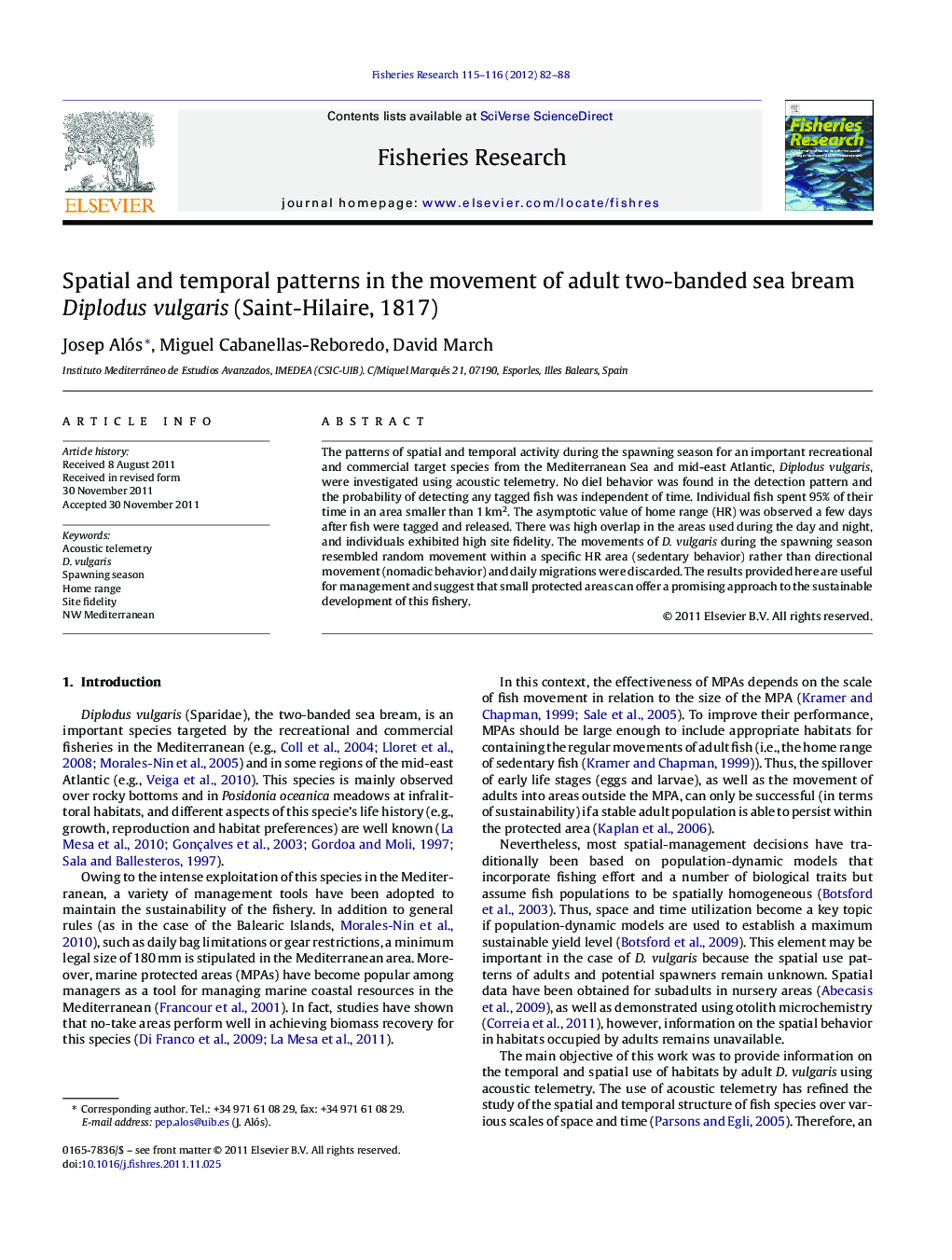| Article ID | Journal | Published Year | Pages | File Type |
|---|---|---|---|---|
| 4543467 | Fisheries Research | 2012 | 7 Pages |
The patterns of spatial and temporal activity during the spawning season for an important recreational and commercial target species from the Mediterranean Sea and mid-east Atlantic, Diplodus vulgaris, were investigated using acoustic telemetry. No diel behavior was found in the detection pattern and the probability of detecting any tagged fish was independent of time. Individual fish spent 95% of their time in an area smaller than 1 km2. The asymptotic value of home range (HR) was observed a few days after fish were tagged and released. There was high overlap in the areas used during the day and night, and individuals exhibited high site fidelity. The movements of D. vulgaris during the spawning season resembled random movement within a specific HR area (sedentary behavior) rather than directional movement (nomadic behavior) and daily migrations were discarded. The results provided here are useful for management and suggest that small protected areas can offer a promising approach to the sustainable development of this fishery.
► Acoustic telemetry is an appropriate method estimating the spatial and temporal patterns in Diplodus vulgaris. ► The probability of detecting any tagged fish is time-independent. ► Individual fish spent 95% of their time in an area smaller than 1 km2 during the spawning season suggesting high site fidelity. ► Small marine protected areas offer a promising tool to the sustainable development of this fishery.
